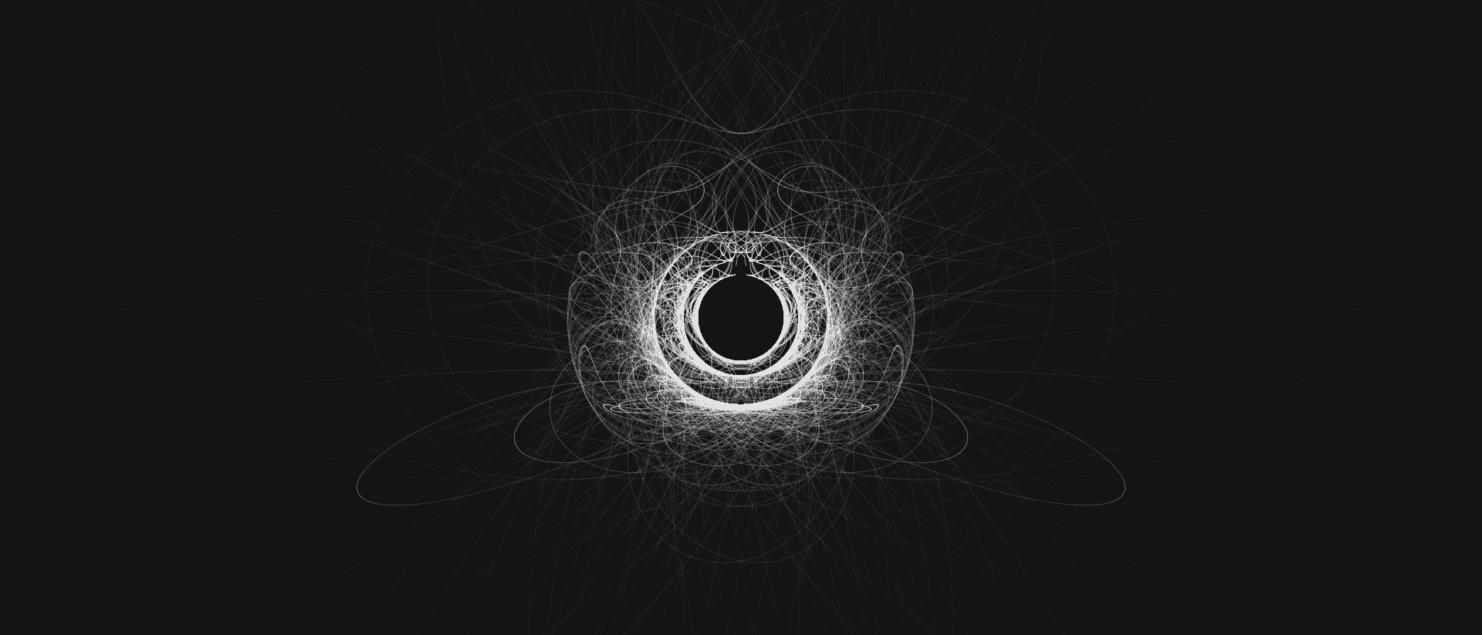Short note: determinism and predictability
Recently, during an online discussion about generative art, determinism, emergence, and the like, I felt like we were running in circles. The problem seemed to be different interpretations of “predictability” and it’s relationship to determinism. This short note isn’t a direct reply to that discussion or to the people involved. In a way, the discussion helped me focus some of the thoughts I have surrounding this in the context of the generative art community in 2022.
Btw the context of this note is generative art in the non-ML or -AI sense. These systems have their own subtleties which position them quite differently in the conceptual landscape.
Predictable
It seems a simple enough term, predictability, whether we can predict or not. Binary. As is often the case with language, this is hiding quite a lot of complexity. The definition is in fact circular “something is predictable if it can be predicted”. What does it mean to predict something? As a physicist, I would say: to know the future state of a system. Kinda dodging the real issue again. Know how much, and in what detail?
(Interestingly enough, this resonates with “entropy”, the definition of entropy critically depends on the granularity with which we describe a system. A being with perfect knowledge perceives no entropy.)
A notoriously unstable system is the double pendulum, the classroom example of chaotic behavior observable in a simple system. Moreover a system where we know the equations governing the dynamics of its mathematical ideal, maybe not simple but at least straightforward. Yet, no matter how accurate our initial conditions, no matter how precise our calculations, the exact position somewhere in the near future will elude us, no matter how close we are to the platonic ideal of a mathematical double pendulum.
However, I can make perfectly valid predictions about the position of the pendulum: it will be somewhere in the space allowed for by its construction. It won’t be in the next room. And if we wait long enough, it won’t be moving anymore, making long-term prediction trivial. “Predictability” depends on how fine-grained we want to look, both in space and time.
Another example I like to use in this context is weather prediction, in the 50s we could predict regional weather 24h in advance with reasonable accuracy, nowadays with over a trillion increase of computing power I’d say we’re up to to 5 days. Weather is, like the double pendulum, a rich dynamic system with strongly non-linear behavior that laughs in the face of our computational scaling. But again, it’s subject to constraints that allow for a measure of predictability regardless of its chaotic nature. Whether that measure is useful is a different question.
Generative
My personal view on generative art is that it’s the art of processes, of emergent properties, not only in nature but also in human constructs (like economy and democracy). I’m not fond of definitions classifying by technique or even the common definition invoking “autonomy”. The use of autonomy in this context refers to “choices made” by the system not the artist, pragmatically the probabilistic processes we implement, the unpredictability we introduce. A common artist’s statement strategy is to extend this autonomy to agency and invoke collaboration with the machine as creative process, but those are musings for another short note.
The variation in what we mean by “generative art” used to be innocently academic, but lately this has changed as genart has become a powerful quantifier in the economic niche of digital art sales using NFT as underlying technology.
It’s not that I think the common definition is wrong or that my way of seeing it is dogma, it’s that I find an art definition void of intent dull. Inside the black box of the word autonomy it refers to technique, our introduction of randomness, not to the intent of our art, not to something in which I’d consider “generative” as a useful qualifier for art. Referring to art by technique definitely has its uses and makes for enlightening conversation, but if we want to position generative art in history it’s not the tools or the tech that will lend it its significance, just as it wasn’t the brush that gave weight to the impressionists.
It is of course perfectly valid to reserve generative art as a descriptive qualifier of tool use. The name of the art school that will be given to the few threads preserved in the future can be decided on later. But I’ll allow myself the naivety and idealism to not consider this bland superficiality as a palatable alternative.
Deterministic
Determinism
all is both (i) the effect of all antecedent activity, and (ii) the only activity that can occur given the antecedent activity.
I’m very interested how unpredictable behavior results from simple deterministic rules. I thought this was the conventional, non-controversial view, of emergence as the fundamental core of genart. Where “emergence” stands in as catch-all term for the insights gained in the 20th century that conceptually moved us on from the 19th century steady-state clockwork universe.
The metaphysical doctrine of determinism simply asserts that all events in this world are fixed, or unalterable, or predetermined. It does not assert that they are known to anybody, or predictable by scientific means. But it asserts that the future is as little changeable as is the past. Everybody knows what we mean when we say that the past cannot be changed. It is in precisely the same sense that the future cannot be changed, according to metaphysical determinism.
Karl Popper
I was surprised when people disagreed, for example by saying that computer code, in practice the computational core of generative art, is 100% predictable. I find this a strange use of “predictable”, in fact making it a synonym of “deterministic”. And I disagree. The example quoted was cellular automata. Simple systems with simple rules. Given an initial condition and its rules we can calculate the next state with 100% fidelity. The system is wholly deterministic. In the same way that the equations of a mathematical double pendulum are deterministic.
Does this make the system predictable? Yes, if our scope is the next state. If we consider one tick of time, “deterministic” equals “predictable”. If we run along the system, keeping up step by step , this remains the case. In that sense any computer code given the initial state of the machine is 100% predictable. But for me that feels a very weak use of “predictability”. It throws away most of the conceptual framework of late 20th century mathematics of non-linear systems. In an “everything deterministic is predictable” view, there is no room for chaos, the clockwork universe we moved on from still reigning supreme.
If we want to know the state of a system after 256 ticks, let’s say a cellular automata, and the only way to answer is to follow the system through 256 steps, then I don’t consider this “predictable” at all.
Predictable (2)
So if not this, what then is my take on “predictable”?
In fact, it ties in with comments I had twelve years ago on the then in my opinion overuse of the word emergence
For the record, I don’t believe in emergence in simple systems. Agreed, the unpredictable patterns created by Langton’s Ant are interesting but the only way to explain them is by running through the simple steps of the algorithm. There’s no higher level of explanation, nothing beyond the blind following of the rules, no meta system. I wouldn’t call that emergence. A real-life ant-hill is another bucket of invertebrates, the many complex interactions between the ants result in an entity that can almost be explained as a single organism, mrs. Hill. Even without knowledge of the algorithm, pheromones mostly, we can sensibly predict the behavior of an ant-hill. Getting swarmed and bitten in the unmentionables, now that’s what I call emergence! And the human ant-hill, we’re probably up five meta’s (ask any sociologist to explain the behavior of a mob by electromagnetic interactions). As a plus, swarming and unmentionable biting are far less common…
Frederik Vanhoutte, Trinity, 2010
Likewise I call a system predictable if we can predict its behavior at one or a few meta levels higher than its mere underlying rules. Not just a tracing of the next step, but a description of behavior, of anthropomorphized intent, a toy model at a higher level. The ants forming a line to retrieve a kernel of grain.
For me, to create generative art, is to strive for emergence in the strong sense, to invoke reactions that are not mere executions of simple rules, to defy prediction, all within the constraints of what we build. A daunting task, I rarely – if ever – succeed. It’s probably an old-fashioned romantic view to consider this striving (and failing) important. It remains jarring to me to see this subject of my love so mechanized by market and platform dynamics, detached from any intent beyond application of technique and commercial appeal.

